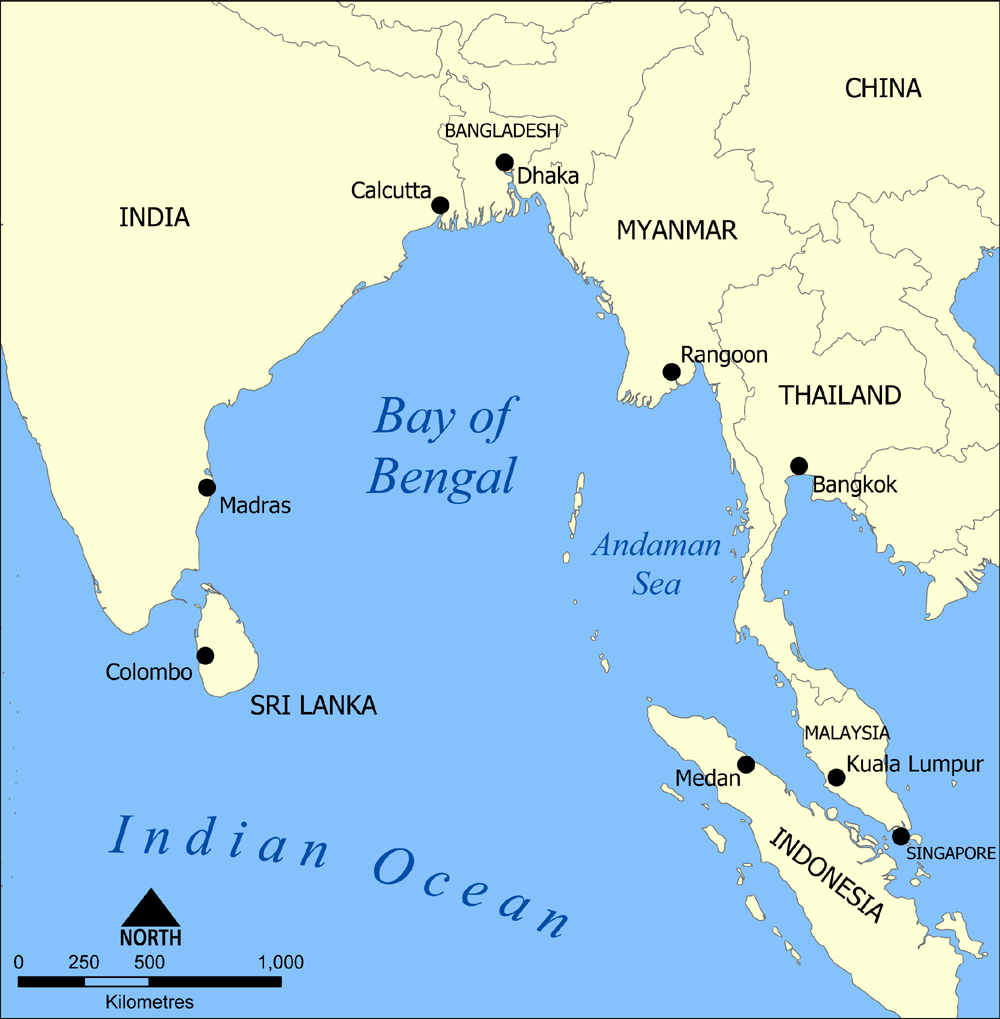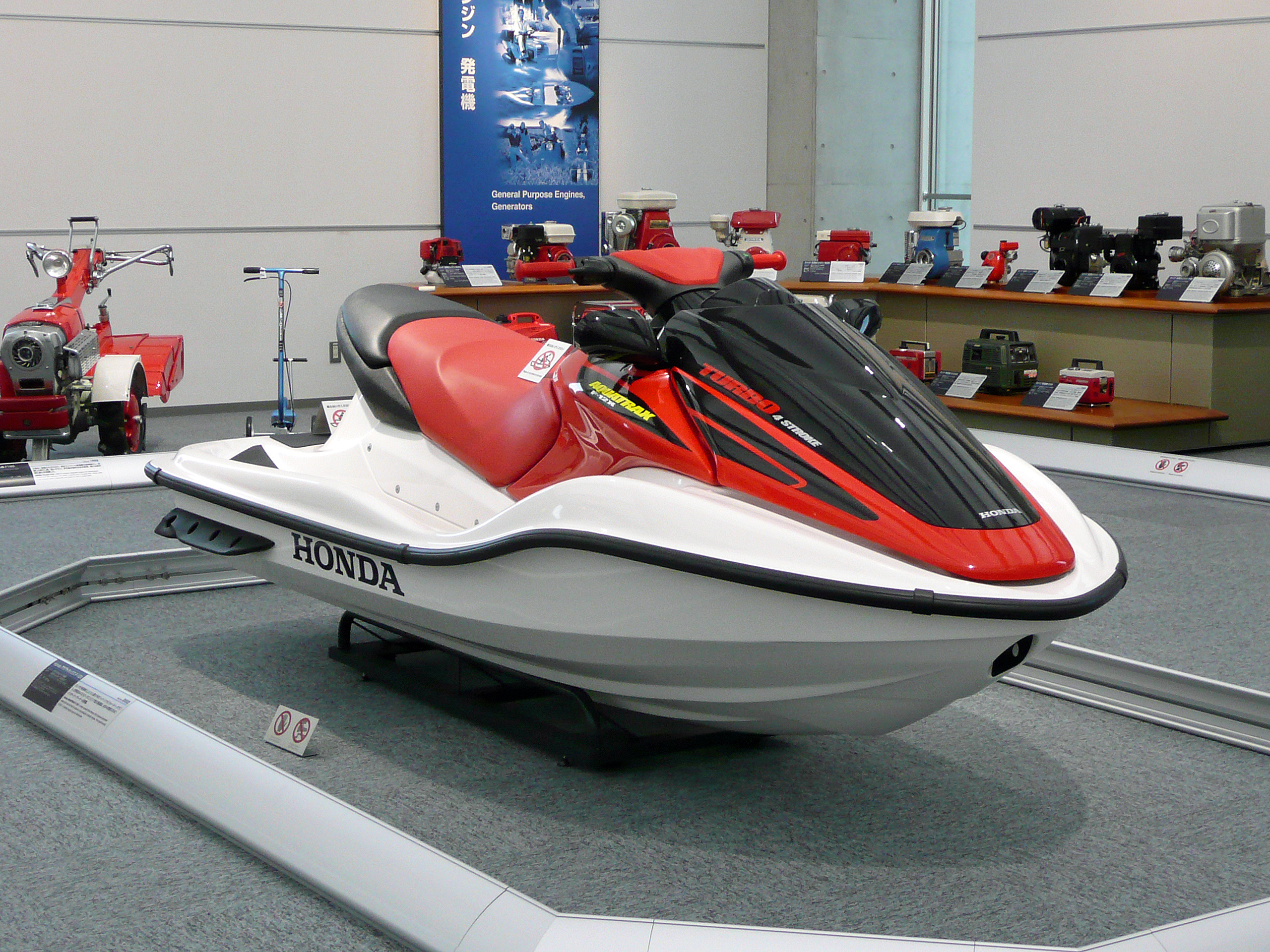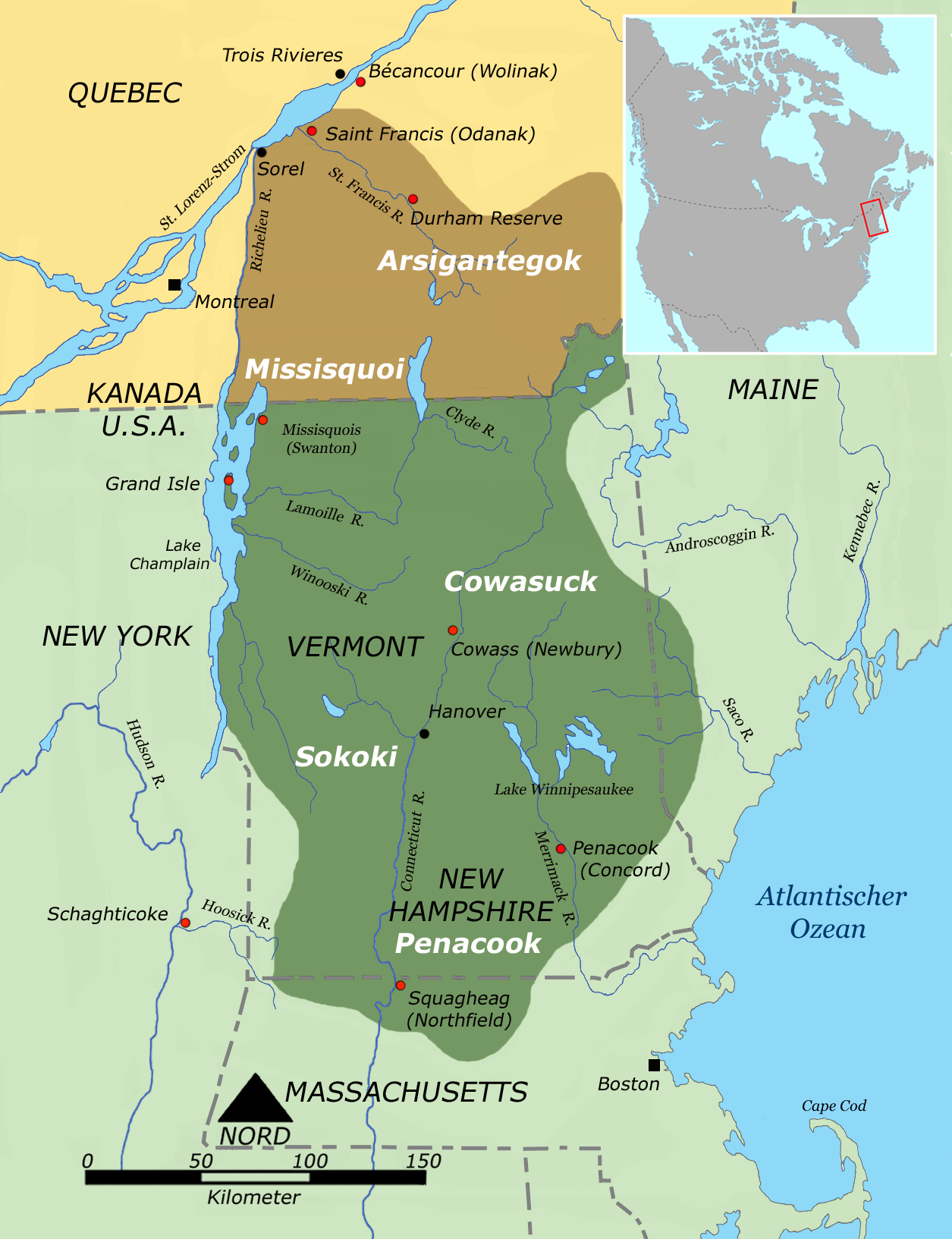|
Missisquoi Bay
Missisquoi Bay is a large extension in the northern part of Lake Champlain, at the East of the output of the latter in Richelieu River. It takes the form of a violin head, with the neck extending from the head of the lake and is about in diameter. The bay is divided between Quebec in Canada and Vermont in the United States. The main town on its banks is Venise-en-Québec, a major summer resort. The river of the same name flows into the bay and the Missisquoi National Wildlife Refuge is located on the American side. Toponymy Champlain, first governor of New France, was the first European to visit the region. The name has an Abenaki origin, meaning "a lot of waterfowl" but other meanings are also thought possible. It appears officially in the eighteenth century in the concession document made on April 6, 1733 to Paul-Louis de Lusignan Dazemard as the "Missiskouy Bay". The spelling has changed several times. In 1855, when changes to electoral counties of Lower Canada into electo ... [...More Info...] [...Related Items...] OR: [Wikipedia] [Google] [Baidu] |
Lake Champlain
, native_name_lang = , image = Champlainmap.svg , caption = Lake Champlain-River Richelieu watershed , image_bathymetry = , caption_bathymetry = , location = New York/Vermont in the United States; and Quebec in Canada , coords = , type = , inflow = Otter Creek, Winooski River, Missisquoi River, Poultney River, Lamoille River, Ausable River, Chazy River, Boquet River, Saranac River, La Chute River , outflow = Richelieu River , catchment = , basin_countries = Canada, United States , length = , width = , area = , depth = , max-depth = , volume = , residence_time = 3.3 years , shore = , elevation = , islands = 80 ( Grand Isle, North Hero, Isle La Motte, '' see list'') , cities = Burlington, Vermont; Plattsburgh, New York Lake Champlain ( ; french: Lac Champlain) is a natural freshwater lake in North America. It mostly lies between the US states of New York and Vermont, but also extends north into the Canadian province of Quebec. The New York portion of the Ch ... [...More Info...] [...Related Items...] OR: [Wikipedia] [Google] [Baidu] |
New France
New France (french: Nouvelle-France) was the area colonized by France in North America, beginning with the exploration of the Gulf of Saint Lawrence by Jacques Cartier in 1534 and ending with the cession of New France to Great Britain and Spain in 1763 under the Treaty of Paris. The vast territory of ''New France'' consisted of five colonies at its peak in 1712, each with its own administration: Canada, the most developed colony, was divided into the districts of Québec, Trois-Rivières, and Montréal; Hudson Bay; Acadie in the northeast; Plaisance on the island of Newfoundland; and Louisiane. It extended from Newfoundland to the Canadian Prairies and from Hudson Bay to the Gulf of Mexico, including all the Great Lakes of North America. In the 16th century, the lands were used primarily to draw from the wealth of natural resources such as furs through trade with the various indigenous peoples. In the seventeenth century, successful settlements began in Acadia and in Quebe ... [...More Info...] [...Related Items...] OR: [Wikipedia] [Google] [Baidu] |
Bays Of The United States
A bay is a recessed, coastal body of water that directly connects to a larger main body of water, such as an ocean, a lake, or another bay. A large bay is usually called a gulf, sea, sound, or bight. A cove is a small, circular bay with a narrow entrance. A fjord is an elongated bay formed by glacial action. A bay can be the estuary of a river, such as the Chesapeake Bay, an estuary of the Susquehanna River. Bays may also be nested within each other; for example, James Bay is an arm of Hudson Bay in northeastern Canada. Some large bays, such as the Bay of Bengal and Hudson Bay, have varied marine geology. The land surrounding a bay often reduces the strength of winds and blocks waves. Bays may have as wide a variety of shoreline characteristics as other shorelines. In some cases, bays have beaches, which "are usually characterized by a steep upper foreshore with a broad, flat fronting terrace".Maurice Schwartz, ''Encyclopedia of Coastal Science'' (2006), p. 129. Bays were sig ... [...More Info...] [...Related Items...] OR: [Wikipedia] [Google] [Baidu] |
Bays Of Quebec
A bay is a recessed, coastal body of water that directly connects to a larger main body of water, such as an ocean, a lake, or another bay. A large bay is usually called a gulf, sea, sound, or bight. A cove is a small, circular bay with a narrow entrance. A fjord is an elongated bay formed by glacial action. A bay can be the estuary of a river, such as the Chesapeake Bay, an estuary of the Susquehanna River. Bays may also be nested within each other; for example, James Bay is an arm of Hudson Bay in northeastern Canada. Some large bays, such as the Bay of Bengal and Hudson Bay, have varied marine geology. The land surrounding a bay often reduces the strength of winds and blocks waves. Bays may have as wide a variety of shoreline characteristics as other shorelines. In some cases, bays have beaches, which "are usually characterized by a steep upper foreshore with a broad, flat fronting terrace".Maurice Schwartz, ''Encyclopedia of Coastal Science'' (2006), p. 129. Bays were sig ... [...More Info...] [...Related Items...] OR: [Wikipedia] [Google] [Baidu] |
Rivière-aux-Brochets Ecological Reserve
Rivière-aux-Brochets Ecological Reserve is an ecological reserve in Quebec, Canada. It was established on December 15, 1999. It is situated near the mouth of the Pike River (french: Rivière aux Brochets) in the Brome-Missisquoi Regional County Municipality of the region of |
Pike River North (Missisquoi Bay)
Pike, Pikes or The Pike may refer to: Fish * Blue pike or blue walleye, an extinct color morph of the yellow walleye ''Sander vitreus'' * Ctenoluciidae, the "pike characins", some species of which are commonly known as pikes * ''Esox'', genus of pikes ** Northern pike, common northern hemisphere pike * Mackerel pike or Pacific saury, a fish popular in east Asian cuisine * Walleyed pike or walleye, ''Sander vitreus'', not actually a pike, but regionally referred to as such Places Russia * Shchukino District (Russian for "Pike" District), an area in North-Western Administrative Okrug, part of the federal city of Moscow. Canada * Pike Island (Nunavut) * Pike River (Quebec) Great Britain * Clougha Pike, a hill in Lancashire, England * Cold Pike, a fell in the Lake District, England * Dollywaggon Pike, a fell in the Lake District, England * Esk Pike, a fell in the Lake District, England * Hartshead Pike, a hill in Lancashire, England * The Langdale Pikes, a range of hills in the La ... [...More Info...] [...Related Items...] OR: [Wikipedia] [Google] [Baidu] |
Pike River (Missisquoi Bay) of November 2010
{{dab, ...
Pike River may refer to: Places *Pike River, South Australia, a locality in the Renmark Paringa Council *Pike River Conservation Park, a protected area in South Australia * Pike River, Quebec, Canada, a municipality (formerly known as Saint-Pierre-de-Véronne-à-Pike-River) * Pike River, Wisconsin, United States, an unincorporated community Rivers Australia * Pike River (South Australia) Canada * Pike River (British Columbia), see list of rivers of British Columbia * Pike River (Quebec), see Lake Carmi United States * Pike River (Michigan) * Pike River (Minnesota) * Pike River (Menominee River), in Wisconsin Other uses * Pike River Mine, New Zealand **Pike River Coal **Pike River Mine disaster The Pike River Mine disaster was a coal mining accident that began on 19 November 2010 in the Pike River Mine, northeast of Greymouth, in the West Coast region of New Zealand's South Island following a methane explosion at approximately 3:44 pm ... [...More Info...] [...Related Items...] OR: [Wikipedia] [Google] [Baidu] |
Personal Watercraft
A personal watercraft (PWC), also called water scooter or jet ski, is a recreational watercraft that a rider sits or stands on, not within, as in a boat. PWCs have two style categories, first and most popular being a runabout or "sit down" where the rider uses the watercraft mainly sitting down, and the watercraft typically holds two or more people. The second style is a "stand-up", where the rider uses the watercraft standing up. The stand-up styles are built for one rider and are used more for doing tricks, racing, and use in competitions. Both styles have an inboard engine driving a pump-jet that has a screw-shaped impeller to create thrust for propulsion and steering. Most are designed for two or three people, though four-passenger models exist. Many of today's models are built for more extended use and have the fuel capacity to make long cruises, in some cases even beyond 100 miles (161 km). Personal watercraft are often referred by the trademarked brand names of per ... [...More Info...] [...Related Items...] OR: [Wikipedia] [Google] [Baidu] |
Champlain Sea
The Champlain Sea (french: Mer de Champlain) was a prehistoric inlet of the Atlantic Ocean into the North American continent, created by the retreating ice sheets during the closure of the last glacial period. The inlet once included lands in what are now the Canadian provinces of Quebec and Ontario, as well as parts of the American states of New York and Vermont. Origins The mass of ice from the continental ice sheets had depressed the rock beneath it over millennia. At the end of the last glacial period, while the rock was still depressed, the Saint Lawrence and Ottawa River valleys, as well as modern Lake Champlain, at that time the Lake Vermont, were below sea level and flooded with rising worldwide sea levels, once the ice no longer prevented the ocean from flowing into the region. As the land gradually rose again, in the process known as isostatic rebound, the sea coast gradually retreated to its current location. The sea lasted from about 13,000 years ago to about ... [...More Info...] [...Related Items...] OR: [Wikipedia] [Google] [Baidu] |
Lower Canada
The Province of Lower Canada (french: province du Bas-Canada) was a British colony on the lower Saint Lawrence River and the shores of the Gulf of Saint Lawrence (1791–1841). It covered the southern portion of the current Province of Quebec and the Labrador region of the current Province of Newfoundland and Labrador (until the Labrador region was transferred to Newfoundland in 1809). Lower Canada consisted of part of the former colony of Canada of New France, conquered by Great Britain in the Seven Years' War ending in 1763 (also called the French and Indian War in the United States). Other parts of New France conquered by Britain became the Colonies of Nova Scotia, New Brunswick, and Prince Edward Island. The Province of Lower Canada was created by the ''Constitutional Act 1791'' from the partition of the British colony of the Province of Quebec (1763–1791) into the Province of Lower Canada and the Province of Upper Canada. The prefix "lower" in its name refers to its geog ... [...More Info...] [...Related Items...] OR: [Wikipedia] [Google] [Baidu] |
Abenaki
The Abenaki (Abenaki: ''Wαpánahki'') are an Indigenous peoples of the Northeastern Woodlands of Canada and the United States. They are an Algonquian-speaking people and part of the Wabanaki Confederacy. The Eastern Abenaki language was predominantly spoken in Maine, while the Western Abenaki language was spoken in Quebec, Vermont, and New Hampshire. While Abenaki peoples have shared cultural traits, they did not historically have a centralized government. They came together as a post-contact community after their original tribes were decimated by colonization, disease, and warfare. Names The word ''Abenaki'' and its syncope, ''Abnaki,'' are both derived from ''Wabanaki'', or ''Wôbanakiak,'' meaning "People of the Dawn Land" in the Abenaki language. While the two terms are often confused, the Abenaki are one of several tribes in the Wabanaki Confederacy. The name is spelled several ways including Abnaki, Abinaki, and Alnôbak. ''Wôbanakiak'' is derived from ''wôban'' ( ... [...More Info...] [...Related Items...] OR: [Wikipedia] [Google] [Baidu] |
Samuel De Champlain
Samuel de Champlain (; Fichier OrigineFor a detailed analysis of his baptismal record, see RitchThe baptism act does not contain information about the age of Samuel, neither his birth date nor his place of birth. – 25 December 1635) was a French colonist, navigator, cartographer, draftsman, soldier, explorer, geographer, ethnologist, diplomat, and chronicler. He made between 21 and 29 trips across the Atlantic Ocean, and founded Quebec, and New France, on 3 July 1608. An important figure in Canadian history, Champlain created the first accurate coastal map during his explorations, and founded various colonial settlements. Born into a family of sailors, Champlain began exploring North America in 1603, under the guidance of his uncle, François Gravé Du Pont. d'Avignon (2008) After 1603, Champlain's life and career consolidated into the path he would follow for the rest of his life. From 1604 to 1607, he participated in the exploration and creation of the first permanent Europ ... [...More Info...] [...Related Items...] OR: [Wikipedia] [Google] [Baidu] |








